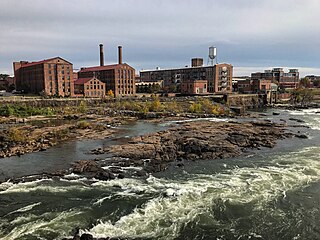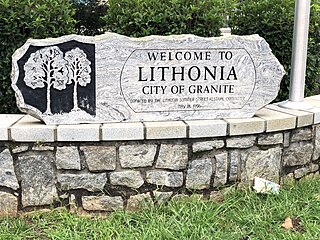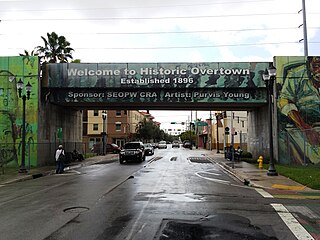The Black Heritage Trail is a National Recreation Trail located in Columbus, Georgia. [1] [2] It is an urban trail connecting 30 African American Heritage Points of interest. The Trail features many contributions and significant events in African American History of Columbus.

National Recreation Trail (NRT) is a designation given to existing trails that contribute to health, conservation, and recreation goals in the United States. Over 1,148 trails in all 50 U.S. states, available for public use and ranging from less than a mile to 485 miles (781 km) in length, have been designated as NRTs on federal, state, municipal, and privately owned lands. Trails may be nominated for designation as NRTs each year. The NRT online database includes information on most designated trails. National Recreational Trails are part of the National Trails System.

Columbus is a consolidated city-county located on the west central border of the U.S. state of Georgia. Located on the Chattahoochee River directly across from Phenix City, Alabama, Columbus is the county seat of Muscogee County, with which it officially merged in 1970. Columbus is the third-largest city in Georgia and the fourth-largest metropolitan area. According to the 2017 estimates from the U.S. Census Bureau, Columbus has a population of 194,058 residents, with 303,811 in the Columbus metropolitan area. The metro area joins the nearby Alabama cities of Auburn and Opelika to form the Columbus–Auburn–Opelika Combined Statistical Area, which has a 2017 estimated population of 499,128.
- Ma Rainey Home
- First African Baptist Church
- St. John AME Church
- Claflin School
- Metropolitan Baptist Church
- Restored Train Station
- Saint James AME Church
- Old City Jail
- Friendship Baptist Church
- The Liberty Theatre
- Spencer High School
- Porterdale Cemetery
- Old Slave Cemetery
- Fifth Avenue School
- Mildred L. Terry Library
- Fourth Street Baptist
- The Spencer House
- Columbus Urban League
- Brick Streets Laid by Slaves
- First Interracial Law Firm of Columbus
- Primus King Site
- Springer Opera House
- Dr. Thomas H. Brewer Assassination Site
- Site of first Silent store
- Temperance Hall
- Greater Shady Grove Baptist Church
- City Mills
- Isaac Maund House
- Kinfolks Corner
- Dillingham Street Bridge
The trail received National Recreation Trail Designation from the Secretary of the Interior during a 2000 ceremony at the historic Liberty Theater. The ceremony paid tribute to Ms. Judith Grant, a Black Heritage Trail organizer and local historian.

The United States secretary of the interior is the head of the United States Department of the Interior. The Department of the Interior in the United States is responsible for the management and conservation of most federal land and natural resources; it oversees such agencies as the Bureau of Land Management, the United States Geological Survey, and the National Park Service. The secretary also serves on and appoints the private citizens on the National Park Foundation board. The secretary is a member of the president's Cabinet. The U.S. Department of the Interior should not be confused with the Ministries of the Interior as used in many other countries. Ministries of the Interior in these other countries correspond primarily to the Department of Homeland Security in the U.S. Cabinet and secondarily to the Department of Justice.










